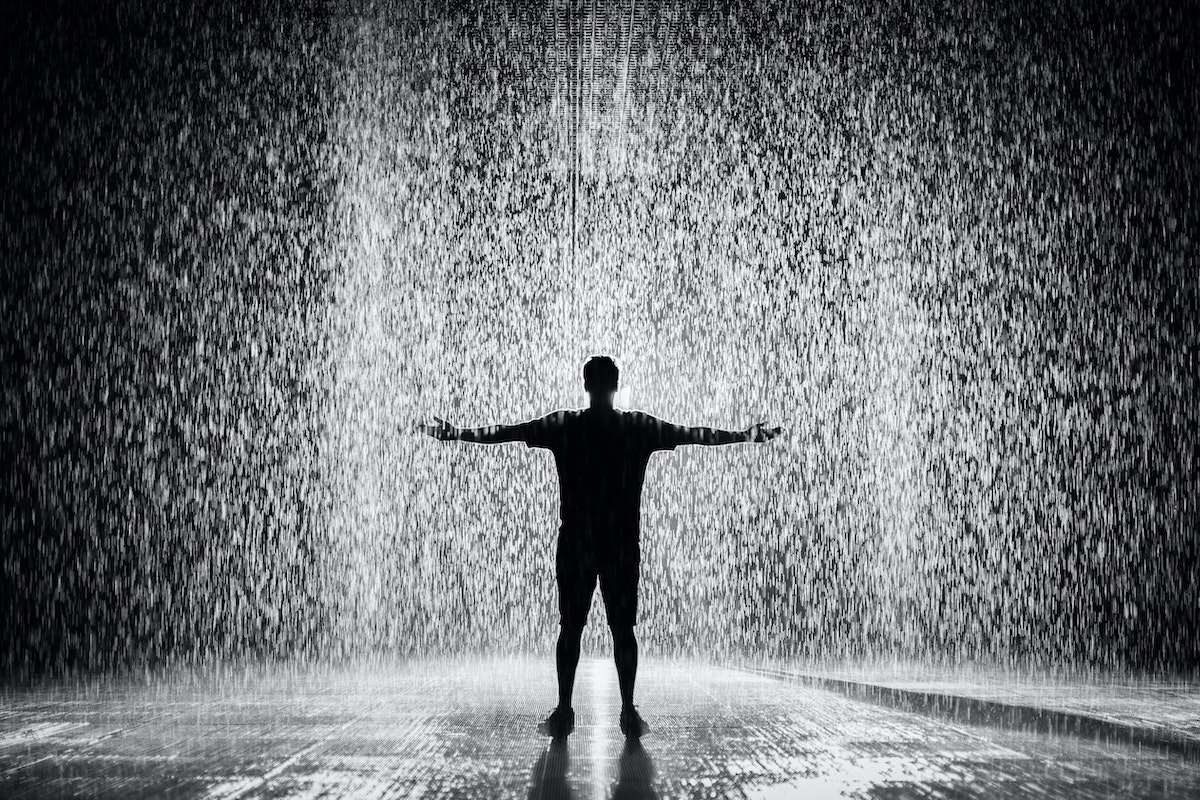People Can Make Rain
Reversing Destructive Land-Use Patterns Can Improve Local Water Cycles

Through an examination of tree rings dating back 2,500 years, scientists have determined that from the 1500s until the 1970s, California was uncharacteristically wet. The latter 130 years of this period cover the modern development of the state. Understandably, planning parameters have been based on overly optimistic figures for rainfall. Not only are our expectations outside the long-term range of weather patterns, but we are making the climate hotter and drier through human-induced climate change.
There are two moisture cycles in nature. The most widely understood one is rain flowing down rivers to the sea, where it evaporates from the ocean surface, condensing into clouds that drift over land to rain again. This, however, only accounts for about half of rainfall. The second cycle is a smaller, more local one. Moisture evaporates from plants, trees, and the soil, making clouds overhead and subsequently falling as rain in the region.
To make clouds, microscopic particles are needed. These were thought to be inert minerals like dust. Only within the past 50 years have scientists begun understanding that bacteria can also be nuclei around which water vapor can coalesce. Studies have shown that cloud-making bacteria exist in every part of the world. One study of cloud-water revealed 28,000 different species of bacteria. Plants and algae create conditions for microbe propagation, of which some become lifted by winds and attract water vapor. Bacteria multiply rapidly and are among the most resilient organisms on the planet.
Sign up for Indy Today to receive fresh news from Independent.com, in your inbox, every morning.
The knowledge that microbes from plants and soil play a central role in rain cycles over land has profound implications. For example, the removal of vegetation by overgrazing or exposing bare soil in monocrop farming can create conditions for drought. Conversely, the restoration of a plant-rich ecosystem could increase precipitation. Cloud-seeding bacteria can be deliberately cultivated to boost water cycles.
Reversing destructive farming, ranching, and forestry practices creates opportunities to restore carbon stocks in soil, plants, and trees. Healthy, carbon-rich soils store a great deal of water and foster abundant microbial communities, leading to increased evaporation, water vapor, and clouds. Evaporation is usually seen as a loss, something to be minimized. We need to change this perspective and start seeing it as a source of precipitation.
A Dutch company, Water Makers, has a project to transform the upper half of the Sinai desert from brown to green, filled with farms, plants, animals, and forests. Centuries ago, the Sinai was green with life, before degrading activities by people dried it out.
With droughts and wildfires in California ever more frequent, it is time to start transforming our industrial agriculture and landscape into carbon-sequestering soils and plants, thereby improving the local rain cycles.
Support the Santa Barbara Independent through a long-term or a single contribution.



